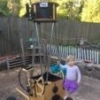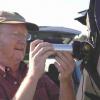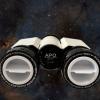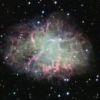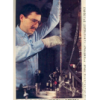...It could be possible that the optical center of the mirror is a little bit away from the geometrical center(!) That can happen if the mirror is not well centered during the grinding procedure with a machine. Normally this is not more than 1 to some millimeters.
Generally speaking, the grinding procedure, machine or hand, delivers a
sphere, where all points on the surface reflect back on themselves to the radius of curvature. The potential for offsetting the optical axis would then be attributed to
parabolizing.
Carl Zambuto noted that the potential for this offset to occur with modern mirror making techniques,
unintentionally, is very small, and the error, if any, would be
less than a few hundredths of an inch (for those who prefer metrics, that's approximately 0.5mm.) For center spotting, this also assumes the paraboloid is a
perfect figure of revolution. It's my opinion that the primary mirror edge is actually more important than the center with regard to image performance contribution, and a precisely placed primary mirror center spot accurately defines the edge!
If this is so, the center spot placement has to account for this to achieve best results.
I've read this comment from many sources and pondered it for many years. In my experience (and the experience of Nils Olof Carlin as well), I have yet to see well collimated (with precision tools and accurately placed primary mirror center spot) Newtonian optics (quality primary and secondary, thermally stabilized and properly supported, and excellent seeing) that did not pass "star" collimation.





